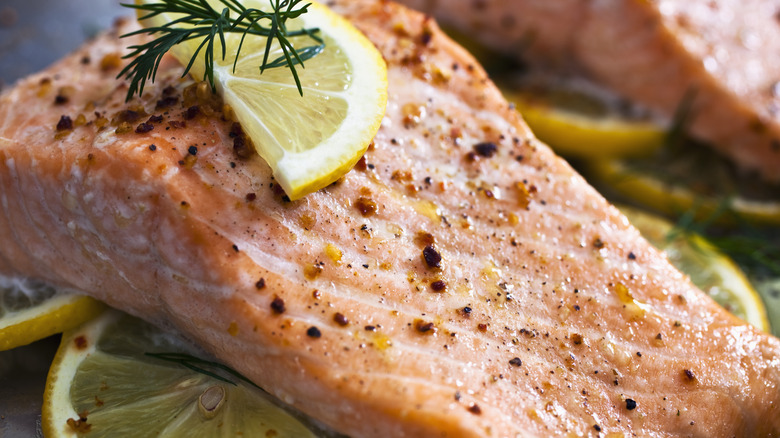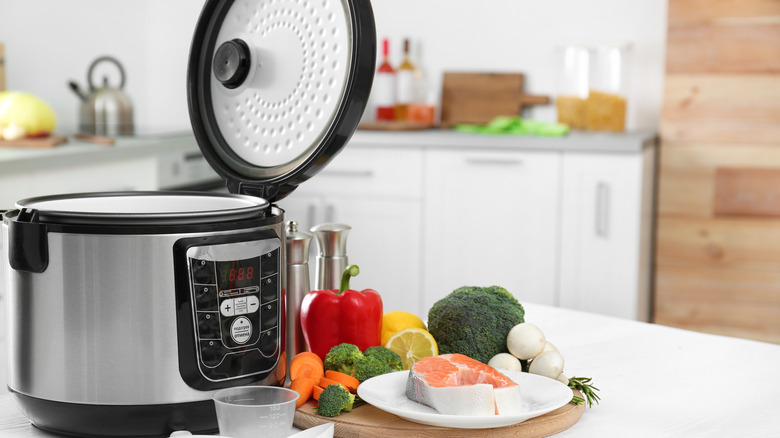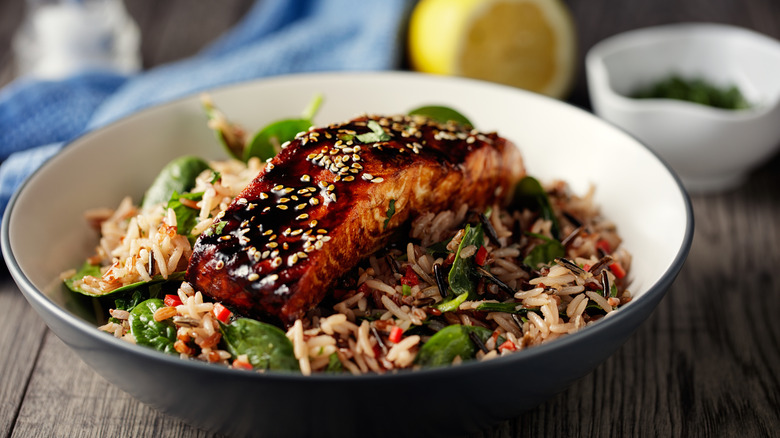What You Need To Know Before Slow-Cooking Salmon
Salmon is a versatile fish and a go-to for many at-home cooks, and there are numerous ways to cook a great fillet. Whether you like to pan-sear it or broil it, there are benefits to every method. But if you are meal-prepping for the week, preparing some salmon in a slow cooker is an overlooked technique that can provide many fillets in exchange for very little effort. You can use these cuts in salads, pasta, or as the main event alongside fresh vegetables.
As with any technique, there are things to keep in mind to make sure your fish comes out pristine. When oven-roasting fish, low and slow is the way to go, and the slow cooker does this beautifully. To minimize cleanup, consider utilizing parchment paper, aluminum foil, or slow cooker liners. Simply line the bottom of the slow cooker with parchment paper or foil and separate the layers with the material. This will ensure the juices marinate the fish, plus, it makes for an easier cleanup. Or, if you plan to cook salmon in addition to another ingredient but don't want the two to mix, you can always use the foil to divide up your slow cooker.
A slow cooker cuts down on time and mess
Salmon is notorious for being difficult to cook using other methods. For instance, when you're pan-searing salmon skin side down, you have to keep a watchful eye so the skin doesn't burn. There needs to be a perfect balance of heat and cooking time since salmon loses much of its delicate texture if you overcook it. The slow cooker, however, is a game changer. In addition to requiring little cleanup, slow-cooked salmon doesn't require a lot of attention. Once you close the lid, you are free to go about your business without having to keep a close eye on the pot or worry that it could burn.
After about an hour and a half, your meal will be prepped and ready to eat. Lift the salmon fillets and parchment paper out of the cooker and let the juices slide back into the pot. The top layer of salmon will most likely have the best texture — you can serve it for dinner that night. Lower layers will be slightly more cooked, so you might use those as mix-ins for future meals. Then simply throw the slow cooker's inner pot into the dishwasher and call it a day.
Uses for slow cooker salmon
There are many ways to serve your slow-cooked salmon leftovers. If you aren't using the fillets for your main course, use them to meal prep a week's worth of salads or macro bowls. This protein pairs well with additional vegetables and grains, so experiment with recipes that call for plenty of those. The world is your oyster.
It's best to consume your leftover salmon rather soon. Fish will keep for no more than three days, even when you keep fillets refrigerated in an airtight container. Reheating salmon can also prove to be problematic if you're not careful. Just like when you initially cooked the fish, use a low-and-slow reheating method so as to not dry it out. Additionally, you have the option of freezing your cooked fillets, but the texture won't be quite the same after you reheat them. Suffice to say, once your salmon is cooked, you're better off eating it immediately. No sense in putting off until tomorrow what you can eat today.


